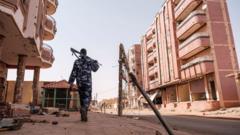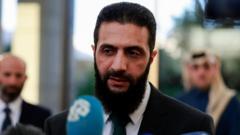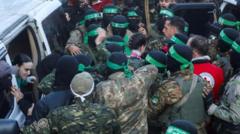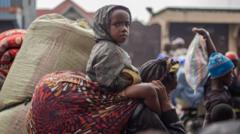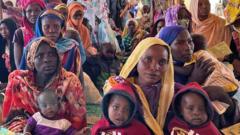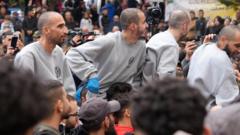In Homs, Syria's "capital of the revolution," residents reflect on the struggles of war while embracing an emerging sense of hope. 20-year-old Baraa and her family share their traumatic past and aspirations for the future amidst the rubble, as the community aims to rebuild together despite the scars of conflict.
Homs: Resilience and Hope Amidst the Ruins of War
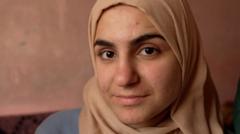
Homs: Resilience and Hope Amidst the Ruins of War
As the dust settles on years of conflict, the voices of Homs rise with newfound hope and determination for a brighter future.
In the city of Homs, once declared the "capital of the revolution," echoes of celebration harmonize with memories of suffering as the Syrian populace emerges from years of conflict. Baraa, who fled her home in the Old City nearly a decade ago, reflects on her past with a sense of resilience and determination that starkly contrasts her turbulent childhood. Now a 20-year-old university student, she and her two sisters enjoy a brief respite from the strife that marked their formative years as they gather together in their humble home.
“My family and I never desired war or a perpetual president,” says Baraa’s father, Farhan Abdul Ghani, a man whose spirit reflects the resilience of Homs. Years ago, when they endured the harrowing siege, Baraa’s childhood was filled with horrific memories of scarcity, where survival often required unimaginable sacrifices. “Back then, instead of learning about books, I learned about weapons,” she recalls, hinting at the dangerous realities she faced.
Today, however, the mood has shifted. Baraa, alongside her father and sisters, expresses a newfound hope. “I'm dreaming of finishing university, pursuing a master's degree, and improving my English,” she says, embodying the youthful optimism that fuels the spirit of many who have survived the horrors of war. Farhan beams with pride, reflecting on the economic improvements in the area now that roads are opened and trade has resumed.
Despite the rebirth of energy in Homs, unhealed wounds remain present. Farhan’s grief for his wife, who was lost to a missile strike, remains a painful reminder of their family’s losses amidst the rubble. The harsh realities of the Syrian conflict—torture, devastation, and loss—continue to haunt those like Dr. Hayan al-Abrash, who was forced to abandon his underground hospital during the seige. As he navigates the remnants of a once-thriving community, he conveys the enduring anger yet acknowledges the possibility of rebuilding for a collective future.
Together, community members describe a vision of unity and collaboration where Muslim and Christian families embark on a journey toward restoration, determined to reclaim their lives from the chaos around them. “This is a very beautiful story,” says Father Tony Homsy, as he welcomes Farhan and his daughters to the Jesuit monastery, the site of refuge during the hardest days of the siege.
While the sense of joy permeates the air in Homs, there remains a firm understanding that healing will take time. “It’s a time to build Syria for everyone but not for those who have blood on their hands,” Dr. Hayan emphasizes, expressing a desire for justice alongside dreams of a better tomorrow. In the heart of the rubble, a vision for peace and recovery crystallizes—a reflection of resilience in the city that once stood as the emblem of revolution.

